Anime is Great – It’s the Fans That Suck! (Part 1 of 2)
I could tell that Anime had gone mainstream when it arrived in the PX.
There is a belief among civilians that stuff is cheaper in the PX.
This is only marginally true, It really isn’t what it used to be. Back before I came in, everyone in the Exchange system was in uniform, (from the truck driver who picked up the merch at the warehouse to the guy who ran the cash register). Everything thing got sold to GIs at wholesale.
However, by the time I was in, various greedy businessmen had managed to get all of that changed. What was left of the Exchange system was a grossly inefficient government-run monopoly. We got charged MSRP for everything but since we were on a Federal Reservation, there were no local or state sales taxes. That was it for the savings.
Regardless, anime was there for all of a week in 1996. Then it vanished without a trace. I knew exactly what had happened. A General’s wife had bought Ninja Scroll at the insistent pleading of one of her grandspawn… And then she watched it with them.
Banished without a trace.
And the funny thing is, Ninja Scroll wasn’t even the hard stuff. But back in the 1990s, there was still this all-pervading belief among the Boomers, Silents, and Greats that all cartoons were strictly kid stuff.
And in truth it was kind of understandable that they would view “Japanamation” the same way.
A very brief history of Anime…
…in America.
I’m not going into the actual history of wherever it came from because I’d be trying to find Japanese cave paintings on the internet and screw that.
The first Anime to arrive here was something called Astro Boy. It featured a shirtless doe-eyed prepubescent robot boy and his disturbingly short pants.

Next came Kimba the White Lion, which Disney banished from existence for some unknown reason.
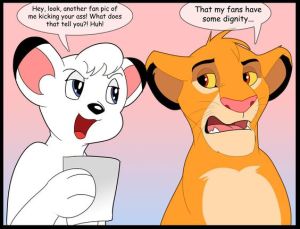
The early Anime TV shows tended to be very herky-jerky because Osamu Tezuka’s studio couldn’t afford to produce as many animation cells as a typical American cartoon. That practice was universal in Japan for the next thirty years or so.
Astro Boy and Kimba were featured prominently in UHF markets that were never anywhere that I lived. So moving right along.
The first Anime series that I did see was Speed Racer. While it was cheaply made, herky-jerky, and incredibly silly, it did break the ground on something it would share with all of the other Japanimation shows that would come after it. If my parents had known what I was watching they would have burned our TV set.
The vehicular carnage was relentless. It started during the credits then continued for the next half hour. Over the course of three years, Speed would engage with, do battle, and triumph over every possible form of evil. Mostly by running it off the road and then setting it on fire.
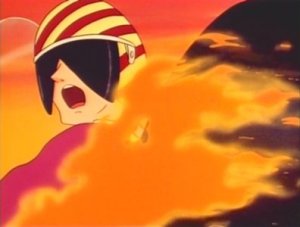
Speed was it for while until something very unexpected happened in 1977. Science Fiction became popular. When Star Wars blew the doors off so hard that there wasn’t even a door frame left behind, American distributors realized that this new generation of kids loved SF in a way that could be very, very profitable.
The market was suddenly ravenous for anything space opera related and Japan as it turned out had plenty in storage. However these shows came with a few problems attached.
The biggest of which was that these shows were NOT meant for children. Footnote for my non-American readers. You have to understand that in America at that time all televised animation was meant for little kids. It was unthinkable that there be an adult market for it.
Of course we Gen-Xers weren’t adults yet but these shows tried to get us there fast.

Star Blazers was blowy-uppie but really no worse than Speed Racer in a lot of ways. A few scenes with Nova had to be trimmed. As well as the moment that Knox heroically frags himself to save the day. In Japan, he died but in America, “he got out in time.” (Little Dark Hearld knew he was being lied to). But on the whole, these things didn’t affect the tone or the plot. Yamato had a fairly grand story. The design work was good for its day and the animation was still pretty cheap and terrible.
The American distribution company that dubbed it was also on the cheap and used the same actors for several different parts. An effort to make the hero sound significantly different from the bad guy resulted in the most fundamentally fabulous villain in all of 1970s animation.
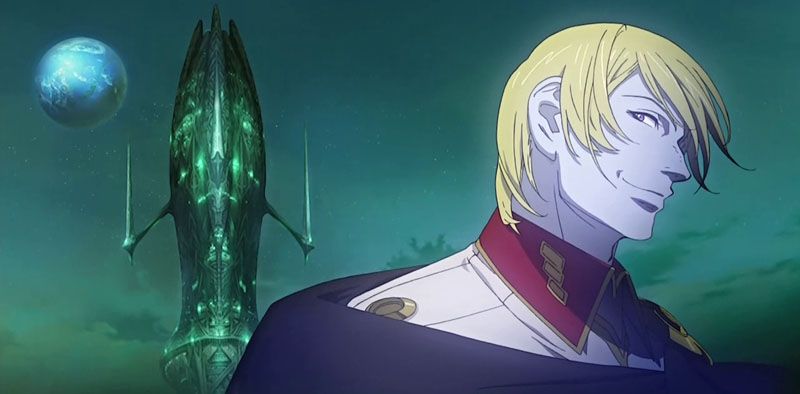
All of the characters’ names were Americanized and not all of the dialog made the jump to English. But on the whole, the American side of the house demonstrated some fundamental respect for the authorial intent of the creators.
Battle of the Planets on the other hand had nothing to do with the original series what so ever.
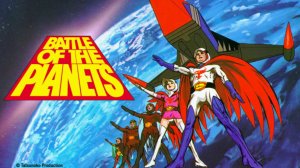
In America Battle of the Planets was about a team of superfriends who traveled the galaxy battling the same source of incompetent evil every week and telling each other how great they were.
In the Land of the Rising Sun, Science Ninja Team Gatchaman was a superhero-spy show that took place on Earth. Yep, there was only one planet and this was it. The show was pretty serious, the good guys didn’t always win. Or for that matter get along with each other.
Not that we would ever find out about that. If there was a scene where Jason and Mark were beating the unholy fuckity, fucking fuck out of each other over Swan-Girl-Bridge-Bunny…

…we instead got to see this godawful thing as a substitute…
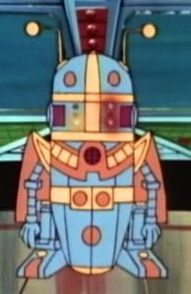
…explaining to us that nothing bad had happened. We all knew damn good and well that this horrible blinking suppository in a cape did not belong in the show.
Seven Zark Seven was this shitty little tacked-on thing that was supposed to provide exposition on where in “Space” this week’s story was going to take place. When he wasn’t lying to us about that, he was telling us that nobody had been hurt in the episode we just watched, no matter how many people had been beaten up, shot up, or blown up. The animation styles were so drastically different it was instantly and ridiculously obvious that it didn’t belong in the show. Seventies Anime was cheap but it was nowhere near as cheap as American Saturday morning cartoons, which this repulsive little turd clearly was a product of.
Starblazers had some fundamental appreciation for the source material. Battle for the Planets clearly held both the original show and it’s own audience in utter contempt.
These two shows were it for a while because there was one ironclad rule of TV show syndication in those days. There had to be a minimum of seventy-two episodes. If there was less than that the show didn’t get distributed unless it was currently in production. Which is why you only got to see Space 1999 for two years but saw the OG Star Trek forever.
Okay stupid rules are still rules. Space Cruiser Yamato and Science Ninja Team Gatchaman easily qualified. But there were other better shows that couldn’t.
However it turned out that there was a way around this problem.
In the alien world of Los Angles, you have to present a cover photo if you want to get a job as a dental receptionist. The Industry permeates every facet of life. It’s impossibly hard to get into the film business, yet it is conversely easy to get sucked in. Of course, it doesn’t make sense, we are talking Hollywood here. It so happened that a real estate company founded by an Egyptian called Harmony Gold suddenly found itself in the Japanese Cartoon business. A lot of the movie business depends on personal connections and if you happen to know a buyer, it’s easy to become a seller…or at least a middle man. Frank Agrama got around enough that his connections made selling anime pretty doable.
And he had a great show that he could sell. Super Dimension Fortress Macross.
The original production company had gone to a lot of trouble with this one. The animation was a lot better than earlier anime shows, the storyline was more complex. The problem as previously mentioned was the seventy-two episode rule. Super Dimension Fortress Macross had only 23 episodes. With all the padding in the world, the series couldn’t be stretched to three times its length. So the guy that Agrama hired to script and record the English dub, Carl Macek, came up with a novel solution to the problem. He bought up two other anime series, Super Dimension Cavalry Southern Cross and Genesis Climber MOSPEADA.
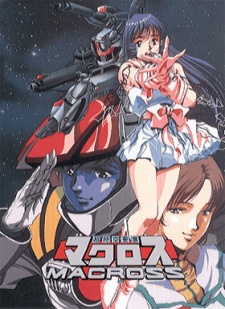
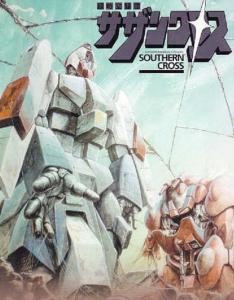

Using some clever scripting and editing, Macek cobbled these all together and created the massive Robotech Saga that spanned three generations. And the amazing thing is that it actually hung together. I for one certainly bought into it hook, line and sinker. I didn’t find out that it was three separate shows until I was stationed in Japan. I nearly concussed myself with forehead-slapping, it was so obvious in retrospect.
The same trick was used for Voltron…but I never watched that one so I can’t tell you if that one worked as well or not.
Robotech still has a strong brand to this day. The same, sadly, cannot be said for the man who made it what it is. Carl Macek pretty much took Anime and introduced America to the grown-up art form we know today. After Robotech Macek started up his own company. Streamline Pictures.
A new company needs eyeballs on it. It needs something to put it on the map. It needs an attention getter.
And brother did Macek have one.
Okay, I’m done here. See you Monday for…
Anime is great it’s the fast that suck (part 2), Akira and Beyond.

